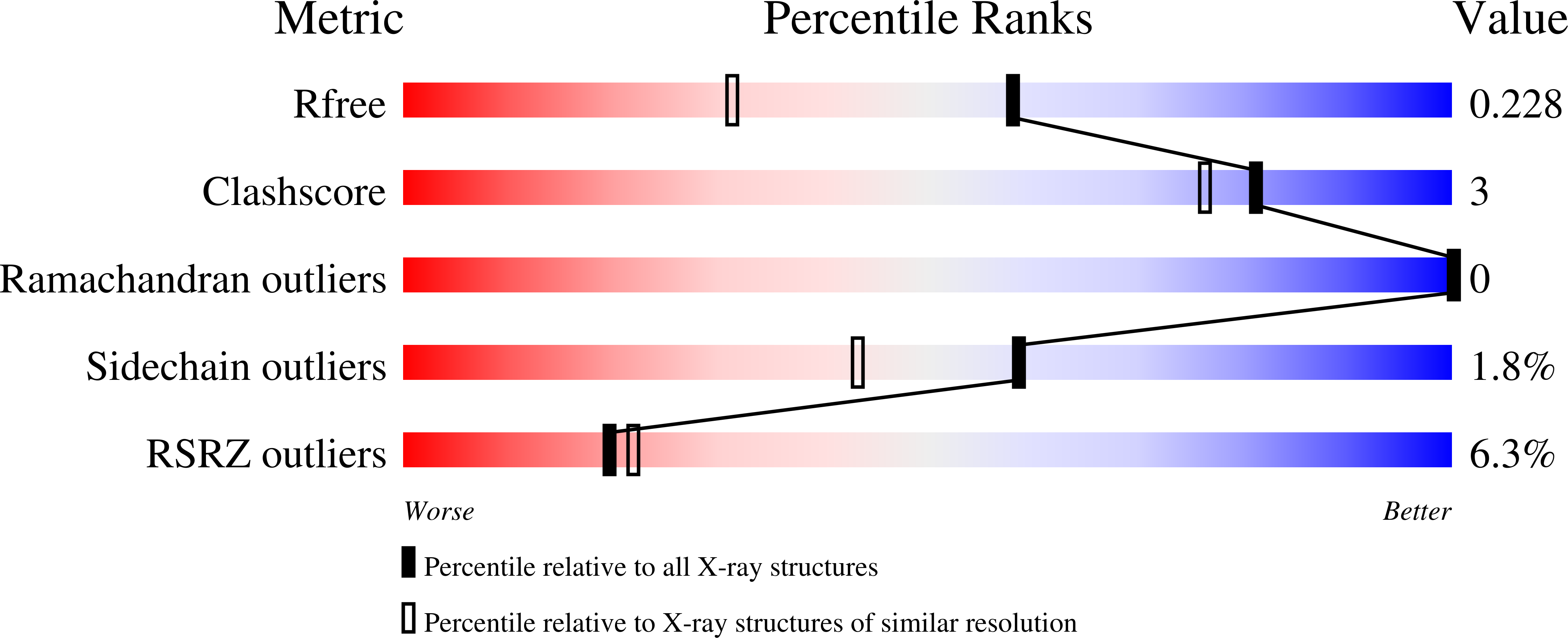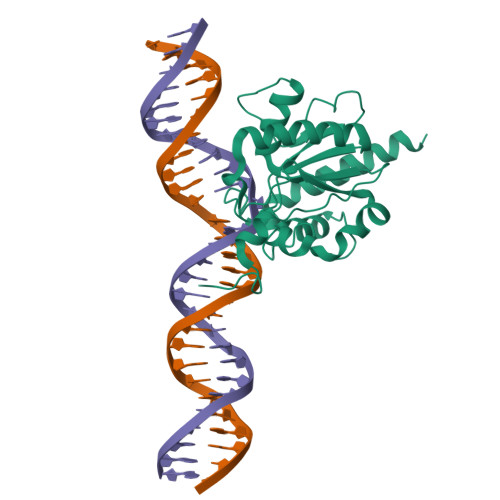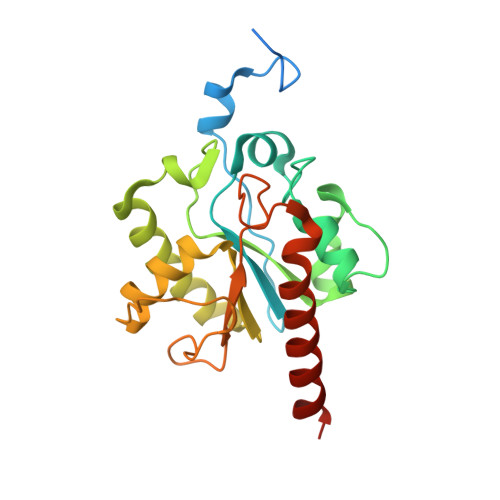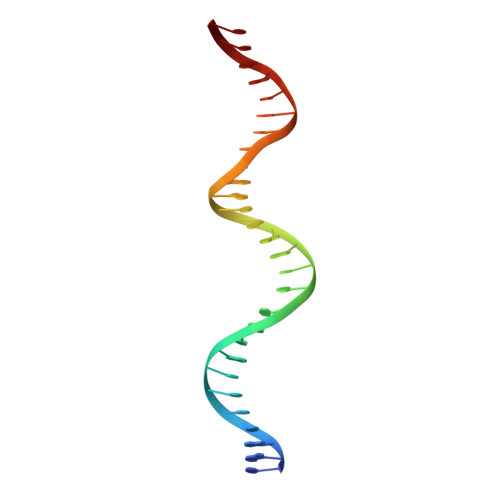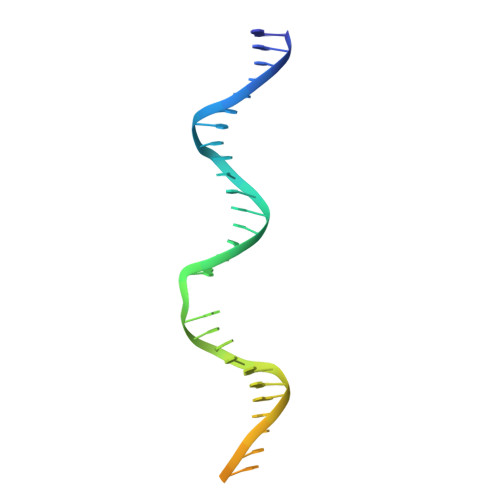Structural basis of damage recognition by thymine DNA glycosylase: Key roles for N-terminal residues.
Coey, C.T., Malik, S.S., Pidugu, L.S., Varney, K.M., Pozharski, E., Drohat, A.C.(2016) Nucleic Acids Res 44: 10248-10258
- PubMed: 27580719
- DOI: https://doi.org/10.1093/nar/gkw768
- Primary Citation of Related Structures:
5FF8, 5HF7, 5JXY - PubMed Abstract:
Thymine DNA Glycosylase (TDG) is a base excision repair enzyme functioning in DNA repair and epigenetic regulation. TDG removes thymine from mutagenic G·T mispairs arising from deamination of 5-methylcytosine (mC), and it processes other deamination-derived lesions including uracil (U). Essential for DNA demethylation, TDG excises 5-formylcytosine and 5-carboxylcytosine, derivatives of mC generated by Tet (ten-eleven translocation) enzymes. Here, we report structural and functional studies of TDG 82-308 , a new construct containing 29 more N-terminal residues than TDG 111-308 , the construct used for previous structures of DNA-bound TDG. Crystal structures and NMR experiments demonstrate that most of these N-terminal residues are disordered, for substrate- or product-bound TDG 82-308 Nevertheless, G·T substrate affinity and glycosylase activity of TDG 82-308 greatly exceeds that of TDG 111-308 and is equivalent to full-length TDG. We report the first high-resolution structures of TDG in an enzyme-substrate complex, for G·U bound to TDG 82-308 (1.54 Å) and TDG 111-308 (1.71 Å), revealing new enzyme-substrate contacts, direct and water-mediated. We also report a structure of the TDG 82-308 product complex (1.70 Å). TDG 82-308 forms unique enzyme-DNA interactions, supporting its value for structure-function studies. The results advance understanding of how TDG recognizes and removes modified bases from DNA, particularly those resulting from deamination.
Organizational Affiliation:
Department of Biochemistry and Molecular Biology, University of Maryland School of Medicine, Baltimore, MD 21201, USA.







